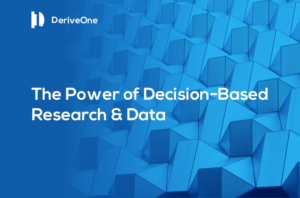Marketing Darwinism caught up with Samir Saluja, Co-Founder of DeriveOne and former Microsoft Learning Executive.
Marketing Darwinism: Samir, you left Microsoft to start DeriveOne with your partner Jason Talwar. Tell us about that transition.
Samir: Microsoft played a huge role in my development and in my understanding of the needs of customers. It also helped me understand the importance of data and using data for scale. What Jason and I realized is that despite the importance of data in the organizational and business world, most were not conceiving of it correctly or in the most efficient manner. We saw that “data for data’s sake” started becoming the essential mantra for companies and we wanted to help them avoid that trap. Thus we started DeriveOne. We consider Microsoft a key partner so still are in the ecosystem.
Marketing Darwinism: “Data for data’s sake?” What do you mean?
Samir: Data has come to be seen as an important commodity and as such companies are scrambling to ingest it and even hoard it. Ingestion is great but what about digestion? How do you use this data? What about data-overload? What about useless data? What about “fake” data? The point here is that data is not an unalloyed good if not trained on decisions. In fact, we believe you need to look at the decisions first and figure out the data needed based on the decisions not just because “data is good.”
Marketing Darwinism: You have a very varied background. Tell us more about your journey.
Samir: Thanks Paul. I have spent time in the Peace Corp, as an entrepreneur, as a business-owner, as a Microsoft employee and as a volunteer. All of these experiences helped me converge on being who I am today, personally and professionally. The Peace Corp helped me learn to listen, empathize and act. Being an entrepreneur taught me about risk and reward. Microsoft helped me understand the importance scaling through partnerships. DeriveOne has helped me realize the value of focus.
Marketing Darwinism: Why should an organization hire DeriveOne?
Samir: We believe that partnering with our customers in the context of what they need and what their customers need is crucial. We help organizations, medium to large and even some startups, use data to hone and focus their customer segmentation strategy, the cognitive diversity of their teams, and to inculcate the culture of decision-driven data. We believe that methodology matters, eliciting what the true decisions that need to be made is key, and delivering accountability is necessary. We are humbled daily by interest in our company.










